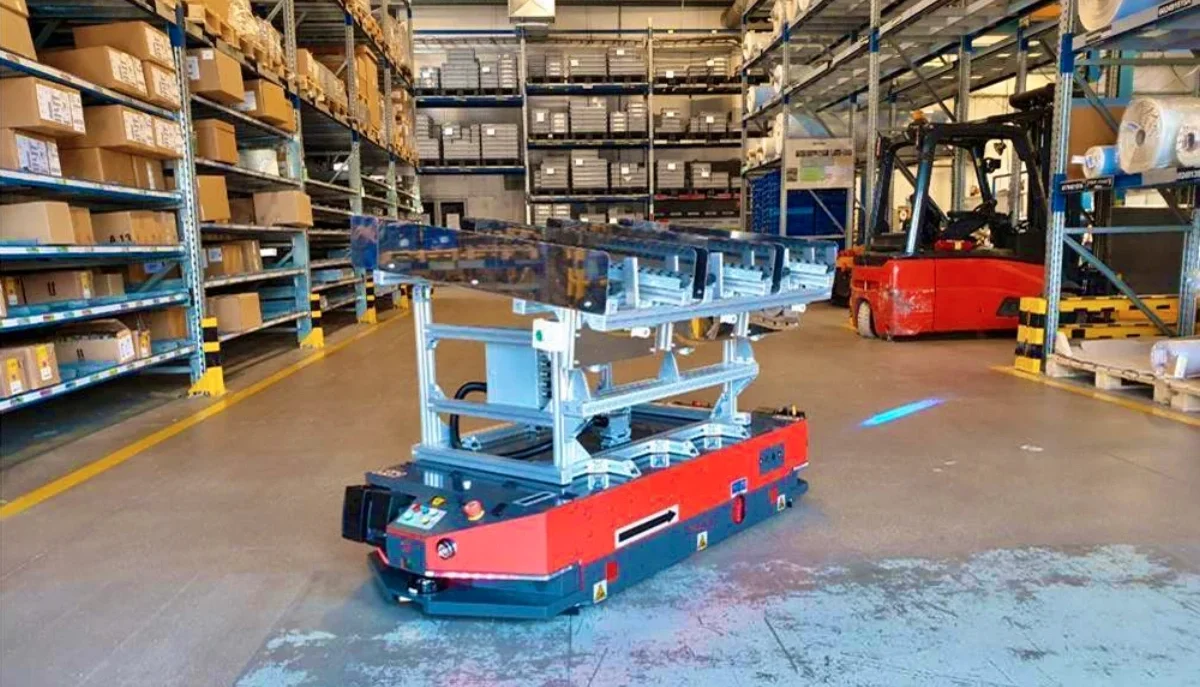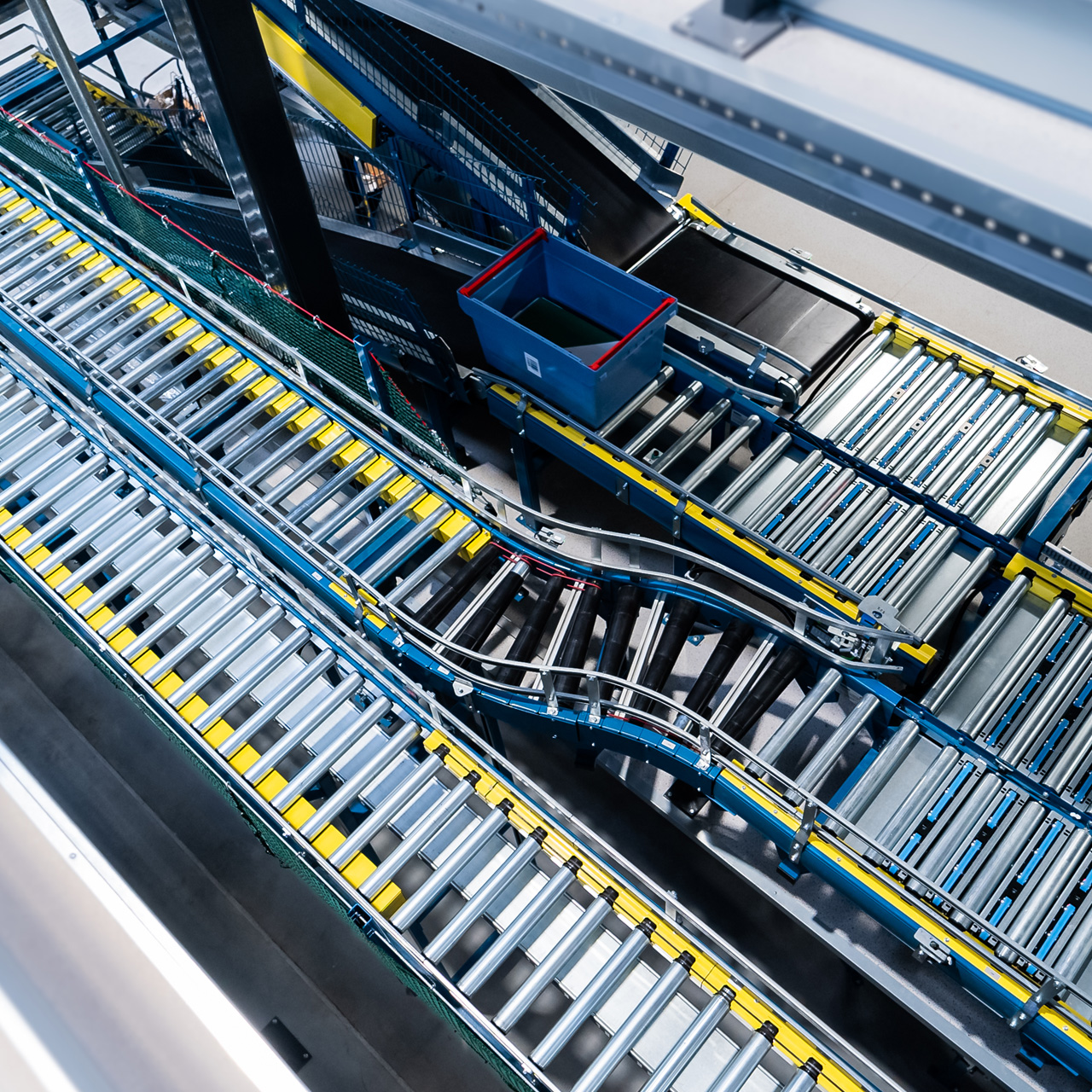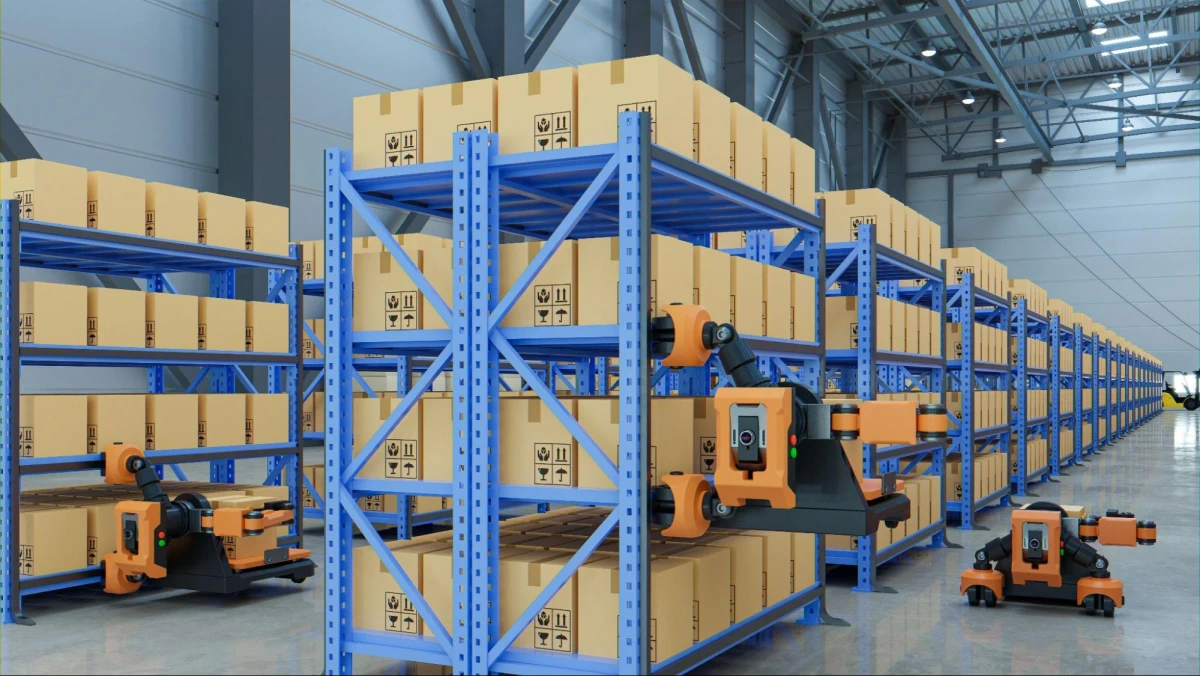AGV vs. AMR – What’s the difference?

Both AGVs and AMRs are a staple of intralogistics automation in warehouses, distribution centres, production plants and other facilities that involve the transport of raw materials or goods. Although through a layman’s eye both types of machines might look as one and the same, in reality there are significant differences between them that determine their usefulness in various situations. Below you will find essential info on both types of automatic transport devices and their possible applications.
AGV – what is it?
An Automated Guided Vehicle (AGV) can be described as an unmanned transport machine that moves independently along a given path. This last part is essential here – an AGV can only go where a predetermined path leads it. This means an AGV has a strictly specified route and doesn’t go anywhere beyond it. Most AGVs move in one direction, so their paths should be closed loops. If an obstacle (e.g. a person, human-operated forklift or a simple box) shows up on their route, AGVs will stop and wait until it is moved out of the way.
Today’s AGVs tend to use magnetic strips or reflective markers on the floor as their paths, which is a considerable step-up from the classic inductive cables that had to be imbedded in the floor. Thus, their implementation is far less invasive in the building structure than it was in the past. This allows for relatively cheap implementation. An AGV system (which includes machines and software) can be used in various types of facilities and is a great addition to any well-organized production line or warehouse.
Types of AGVs
Automated guided vehicles come in various forms, from small carts that can carry single objects to massive loading equipment that can easily move tens of tons at once. Here are some of the most commonly used ones:
- Under Ride/Cart – it‘s the smallest option, popular especially in e-commerce warehouses. They can carry various totes and small cargo pallets or tow trolleys/carts weighing up to several hundreds of kilograms.
- Very Narrow Aisle AGV – a great addition to high-stack warehouses—they can be used for depositing pallets on up to 12 m high racks. Plus, you can get far more storage space than with classic forklifts – these AGVs only require 1,7 m spaces between aisles to move around.
- Automated Pallet Jack – an AGV dedicated to transporting pallets. It can pick up cargo off the floor or directly from elevated platforms (up to 1,5 m high).
- AGV Tow Tractor – can tow multiple carts/trolleys at once. However, it’s only practical in spacious areas.
- Unit Load AGV – can easily replace conveyor belts for transporting goods across the facility.
What is an AMR?
AMR stands for Autonomous Mobile Robot and refers to a machine that’s not only self-driven, but also can choose its path to a given point of interest. Autonomous mobile robots use a system of laser sensors and cameras to register their surroundings, allowing them to freely navigate their environment and pick the optimal route to their destination. All you have to do is press a dedicated button on the robot and manually drive it through the facility – this will create a virtual map, which the robot will later use to navigate itself.
There’s no fixed routes or magnetic tapes here – an autonomous mobile robot (AMR) can easily identify obstacles and react to dynamic operations. This allows it to pick an alternative route on the fly, reducing downtime and allowing continuous material flow without human intervention.
Types of AMRs
AMRs are generally divided into 2 groups – specialized, made for specific tasks and those with modular build.
The first group basically coincides with AGV types, while the robots from the second can perform various tasks, depending on the currently installed work module. Thanks to this, they can be easily fitted to what companies need at the moment. This category includes our flag products – VersaBots.
Which type of automated transporter is better?
The short answer is – it depends. Both types of machines can be a great asset when utilized in the right circumstances and help you in increasing productivity.
AGVs work well in a static work environment with simple transport routes. Their paths are predictable, making it easy for human workers to avoid them during work or find them while tracking inventory. A typical AGV is a less expensive solution than an AMR and its sophisticated software (although the gap is significantly smaller when you include the cost of required physical guides).
AMRs require less space and can work in dynamic environments and in different locations. They can be a perfect solution when there are multiple pick-up points or increased traffic in transition points. You should keep in mind that obstacle avoidance makes them less predictable than AGVs – people might bump into them during this manoeuvre if they aren’t paying attention. Depending on the work environment, you can set the robots to simply stop when they detect obstacles.
AGVs and AMRs – summary
The main difference between the two is the need to plan routes for each unmanned guided vehicle and complete freedom of movement in case of robots (AMRs). They both can work wonders for intralogistics in warehouses, production plants, distribution centres etc. Both have onboard sensors that prevent them from causing collisions and are fairly easy to implement (although AMRs are advantaged here – they are ready to work mere hours after arriving). That said, AGVs are more suited for stable work places without major disturbances, while AMRs can actively avoid obstacles and are ideal for busy, ever-changing environments.



